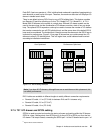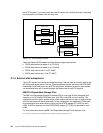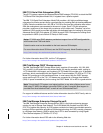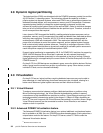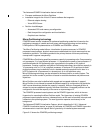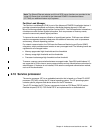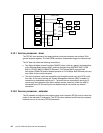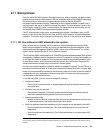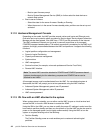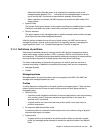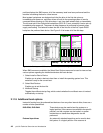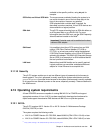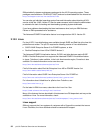
Chapter 2. Architecture and technical overview 43
2.11 Boot process
From the earlier RS/6000 systems, through the previous pSeries systems, the boot process
passed through several enhancements. With the implementation of the POWER5 technology,
the boot process is enhanced to accommodate the flexibility that the POWER5
processor-based hardware features. Depending on the customer’s needs, a system may or
may not require the use of an HMC to manage the system. The boot process, based on the
Initial Program Load (IPL) setup, is determined by the hardware setup and the way you use
the features that POWER5 processor-based systems provide.
The IPL process starts when power is connected to the system. Immediately after, the SP
starts an internal self test (Built-In-Self-Test, or BIST) that is based on integrated diagnostic
programs. The system status changes to standby only when all of the test units have passed.
2.11.1 IPL flow without an HMC attached to the system
When system status is standby, the SP presents a System Management Interface (SMI),
which can be accessed by striking any key on an attached serial console keyboard, or the
Advanced System Management Interface (ASMI), which uses a Web browser
7
on a client
system that is connected to the SP on an Ethernet network.
The SP and the ASMI are standard on all POWER5 processor-based hardware. Both system
management interfaces require the general or admin ID password, and they both enable you
to set flags that affect the operation of the system according to the provided password, such
as auto-power restart, view information about the system (such as the error log and VPD),
network environment access setup, and control of system power.
You can start and shut down the system in addition to setting IPL options. The p5-570 has a
permanent firmware boot side, or A side, and a temporary firmware boot side, or B side. New
levels of firmware should be installed on the temporary side first in order to test the update’s
compatibility with your applications. When the new level of firmware has been approved, it
can be copied to the permanent side.
In the SMI and ASMI, you can view and change IPL settings:
System boot speed
– Fast or Slow: Fast boot results in skipped diagnostic tests and shorter memory tests
during the boot.
Firmware boot side for next boot
– Permanent or Temporary: Firmware updates should be tested by booting from the
temporary side before being copied into the permanent side.
System operating mode
– Manual or Normal: Manual mode overrides various automatic power-on functions, such
as auto-power restart, and enables the power switch button.
AIX/Linux partition-mode boot (available only if the system is not managed by the HMC)
– Service mode boot from saved list: This is the preferred way to run concurrent AIX
diagnostics.
– Service mode boot from default list: This is the preferred way to run stand-alone AIX
diagnostics.
7
Supported browsers are Netscape (version 7.1), Internet Explorer (version 6.0), and Opera (version 7.23). At the
time of writing, older or previous versions of these browsers are not supported. JavaScript™ and cookies must be
enabled.



